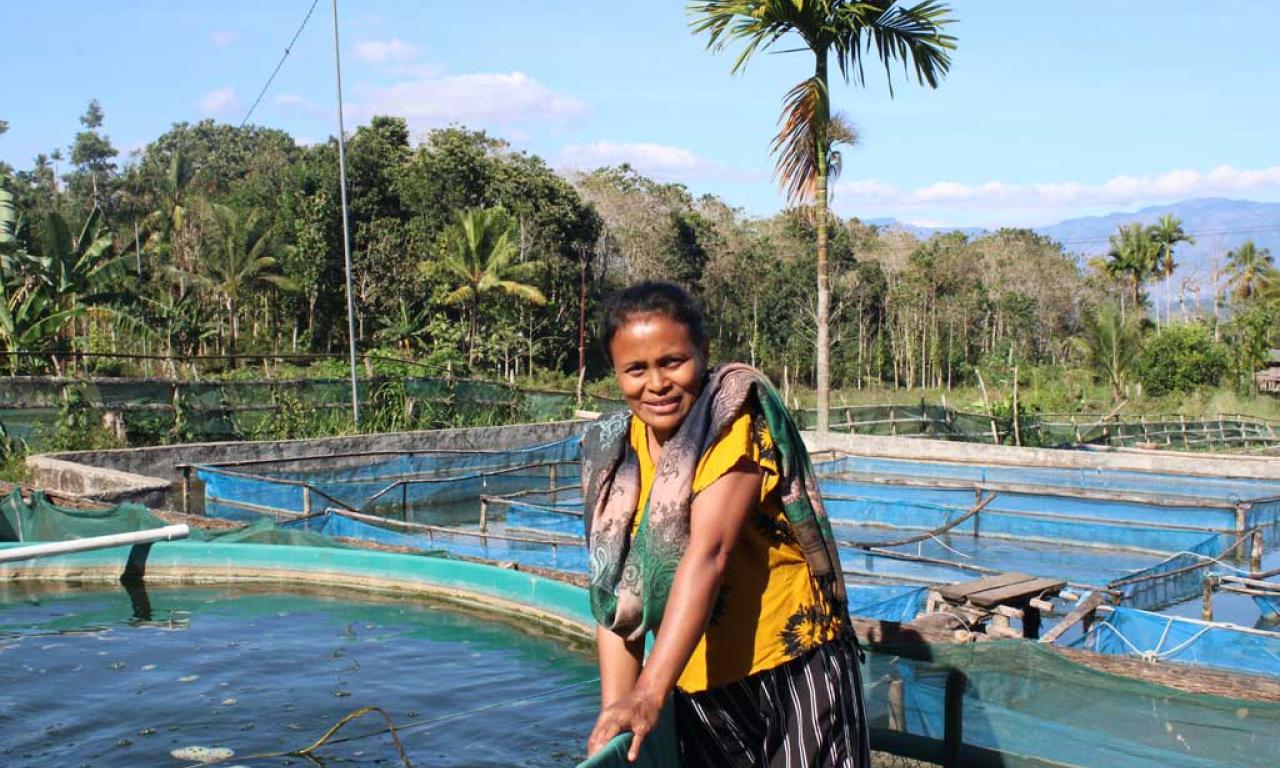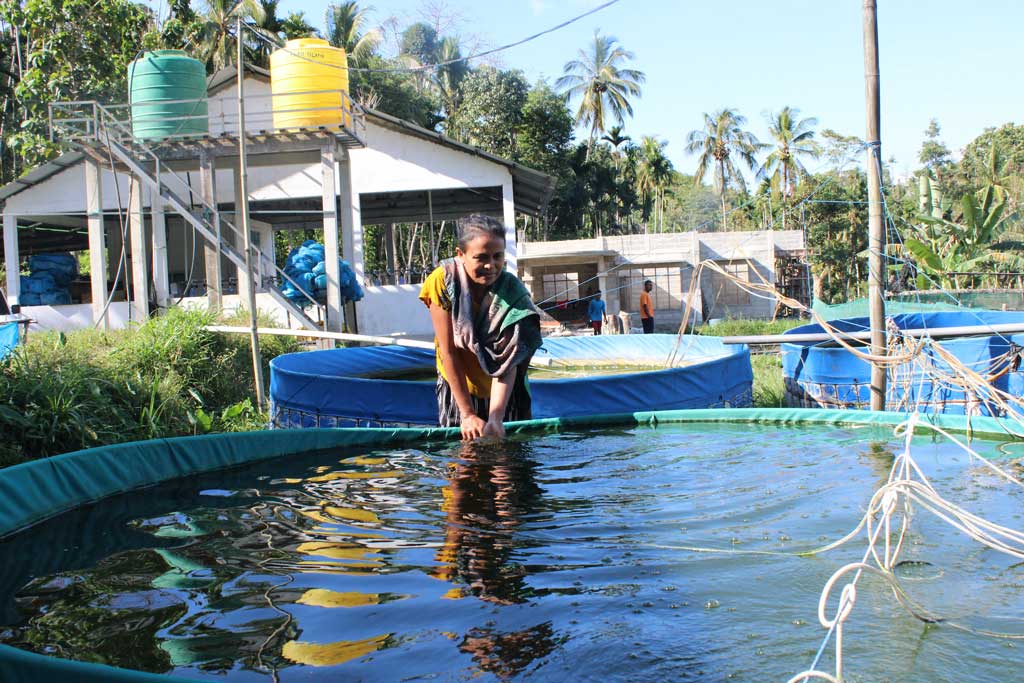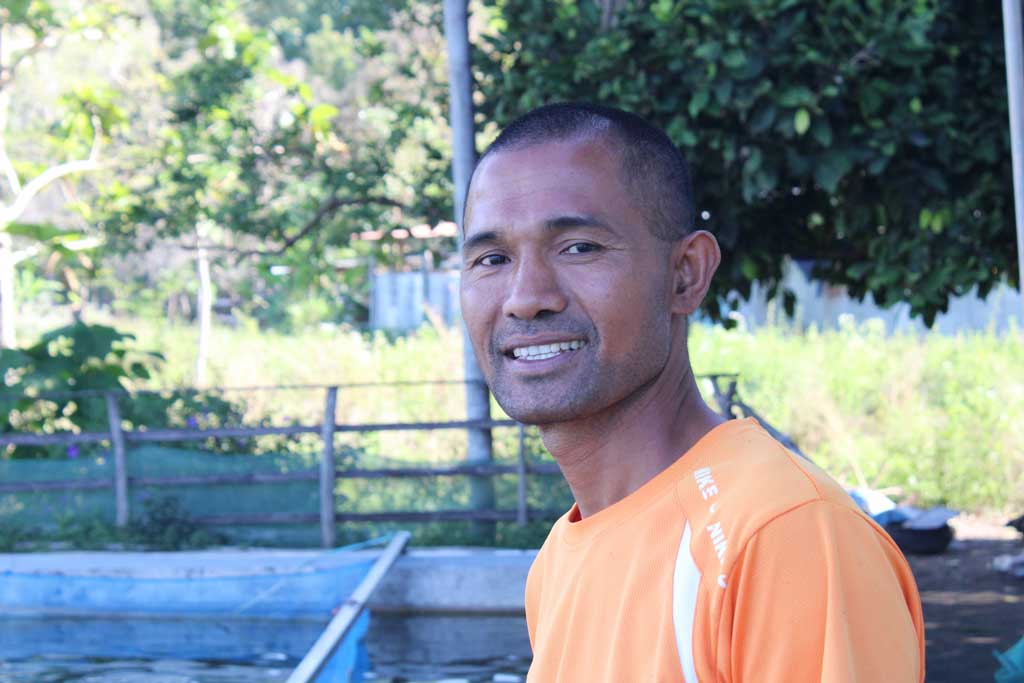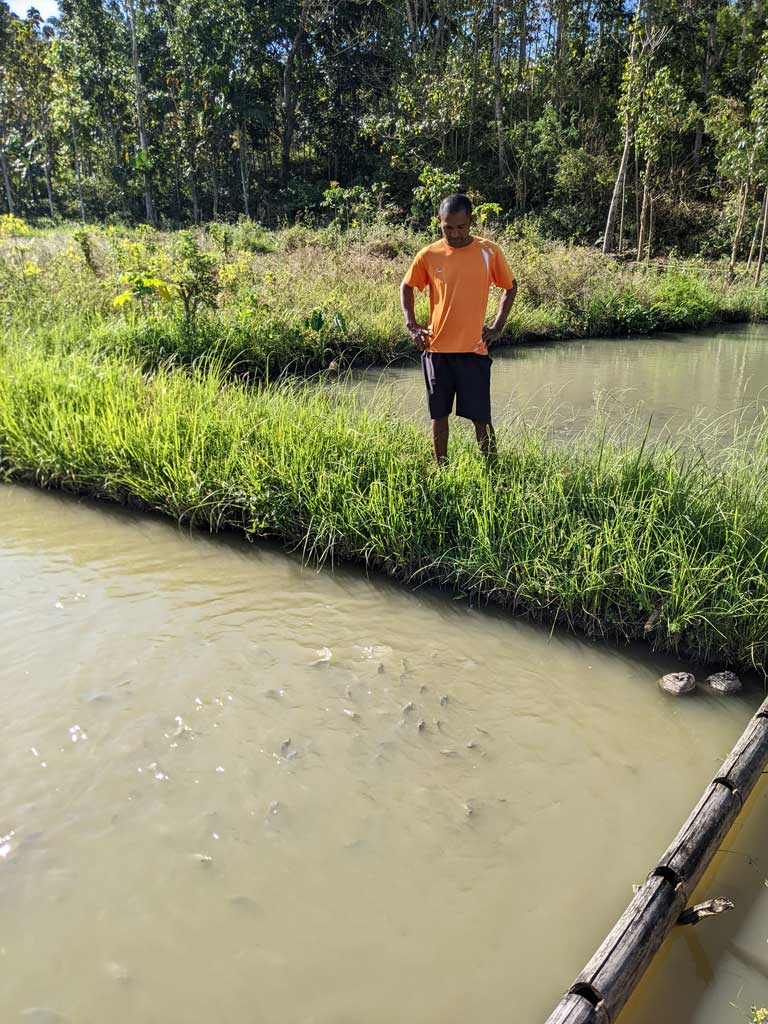
WorldFish and the Ministry of Agriculture and Fisheries (MAF) provide technical support and guidance to 190 aquatic food producers across Timor-Leste, who are increasingly expanding and enhancing their farming operations, leading to higher production and supporting greater aquatic food consumption.
“My family and I eat tilapia every day,” explains Amelia Da Silva from Leohitu village.
It is a unique story in inland areas of Timor-Leste, where the average person eats 5.2 kilograms each year, according to a 2011 survey, which is low compared to regional averages.
“I cook fish in many different ways such as grilled or fried—and served with rice and vegetables such as water spinach, cassava leaves or young papaya—or pop it in sour soup,” says the 36-year-old.
Da Silva is a mother of two and, at the time of writing, was seven months pregnant with her third child.
“Fish has good nutritional value and is particularly important for brain development in the first 1,000 days of life,” she says.
Encouraging greater aquatic food consumption is a key goal of the Partnership for Aquaculture Development in Timor-Leste Phase 2 project (PADTL2; 2020–2023).
It is funded by the New Zealand Ministry of Foreign Affairs and Trade (MFAT) and the United States Agency for International Development (USAID) and implemented by WorldFish in partnership with MAF.
“The PADTL2 project has been devising and disseminating sustainable aquaculture technologies for Timor-Leste for around a decade,” explains Jharendu Pant, PADTL2 project leader and senior aquaculture scientist at WorldFish.
“It follows a holistic approach to increasing availability, accessibility and consumption of aquatic foods, thereby helping aquatic food producers increase their production of genetically improved farmed tilapia (GIFT), leading to a greater supply of aquatic foods for consumers.
“This effort builds on the work of phase one of the project (2014–2019) and is key to realizing the Timor-Leste government’s targets in the National Aquaculture Development Strategy (2012–2030).”
By 2030, the goal is for farmed aquatic food production to reach 12,000 tons per year and for annual aquatic food consumption to increase from 6.1 kilograms to 15 kilograms per person.
$1,500 income from fish farming: Amelia Da Silva’s story
Da Silva and her husband own and run the Leohitu public-private-partnership hatchery in Leohitu, Bobonaro.
“I help with feeding the fish and controlling the water inflows,” she explains.
Since 2018, she has been managing six fish ponds located next to the hatchery breeding ponds as a side business.
“I have two earthen ponds and four biofloc tanks.”
A biofloc system is an aquaculture technique based on in-situ microorganism production – bacteria, phytoplankton and zooplankton – that could substantially reduce the feed costs by increasing the in-situ production of natural food.
Da Silva is one of 56 aquatic food producers involved in the Leohitu cluster that receives technical guidance from the PADTL2 project.
Overall, there are ten clusters (190 aquatic food producers) across Baucau, Bobonaro, Ermera and Lautem municipalities.
For the last four years, Da Silva has farmed two production cycles annually, as recommended by the PADTL2 project.
“I use commercial aquatic feed that helps the tilapia to grow bigger and faster,” she says.
A farmer using high-quality commercial feed can harvest tilapia between four months (at 250 grams each) and six months (at 400 grams each).

Da Silva sells her fish for $5 per kilogram to households in Leohitu and in markets in Maliana and Dili, the capital of Timor-Leste.
“Over the last six months, I made $1,500 from selling 300 kilograms of fish,” she says.
“I produced 200 kilograms in the big pond and 100 kilograms from the four biofloc ponds.”
Da Silva has used her fish farming profits to pay for her children’s school fees, buy groceries and household essentials as well as contribute toward building her family’s new house.
“I will continue fish farming and plan to make three more ponds in the future,” she says with a smile.
‘Fish farming is easy’: Abrio Pereira’s story

Abrio Pereira is in the same cluster as Amelia.
In 2018, he responded to an expression of interest from WorldFish for more aquatic food producers.
“I was interested to start fish farming as the price point for tilapia is much higher and it grows faster [than goldfish],” says Pereira, who used to farm goldfish during the Indonesian occupation of Timor-Leste (1975–1999).
After achieving substantial profits from one fish pond, he expanded to four fish ponds in 2019.
In October 2021, Pereira and the other project farmers received a share of 240,000 fingerlings and 34.6 tons of aquatic feed distributed by the PADTL2 project as a one-off intervention during a COVID-19 lockdown.
This resulted in the 190 farmers producing 73 tons of farmed tilapia in the October 2021 to March 2022 production cycle—a major increase compared with 28 tons per cycle before COVID-19.
“I produced 400 kilograms of tilapia, which I sold for $5 per kilogram to local households as well as in Maliana and Dili markets.”
“In the past, I only used local aquatic feed, so the tilapia grew slower. With the commercial aquatic feed provided by the project, the fish grew faster,” says Pereira, who also farms chicken, pork, cattle and beetlenut.
“I hope to continue using the commercial aquatic feed, which will enable me to do two production cycles in a year.”

In the previous production cycle in 2021, Pereira made $800 in income.
“I used the profits from fish farming to help pay for my nephews’ schooling.”
Pereira, who lives with his sister, eats tilapia once a week.
“I like fish farming because it is easy. I only need to control the water and the feed.”
“If demand for farmed tilapia continues to grow, I will definitely continue fish farming.”
